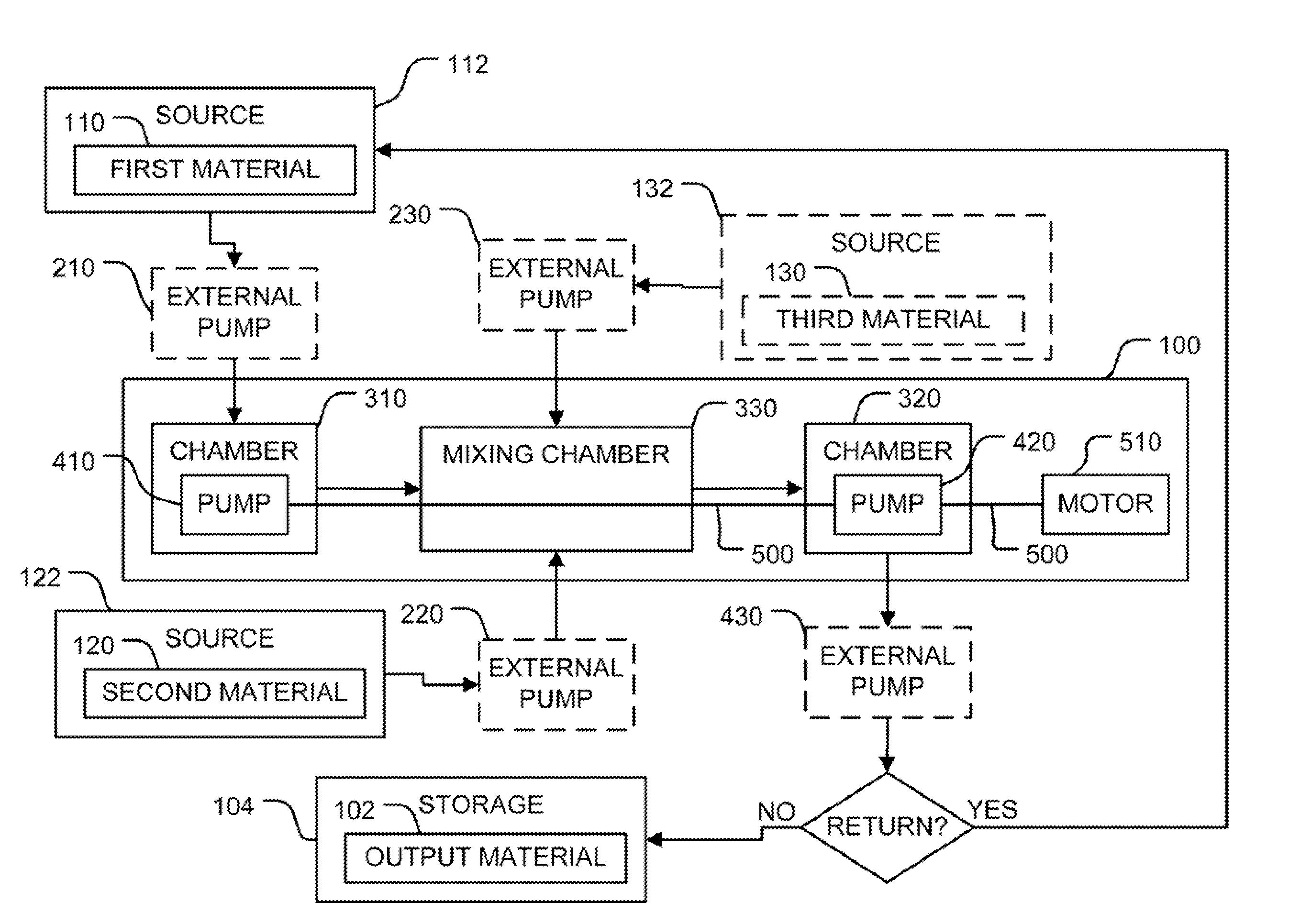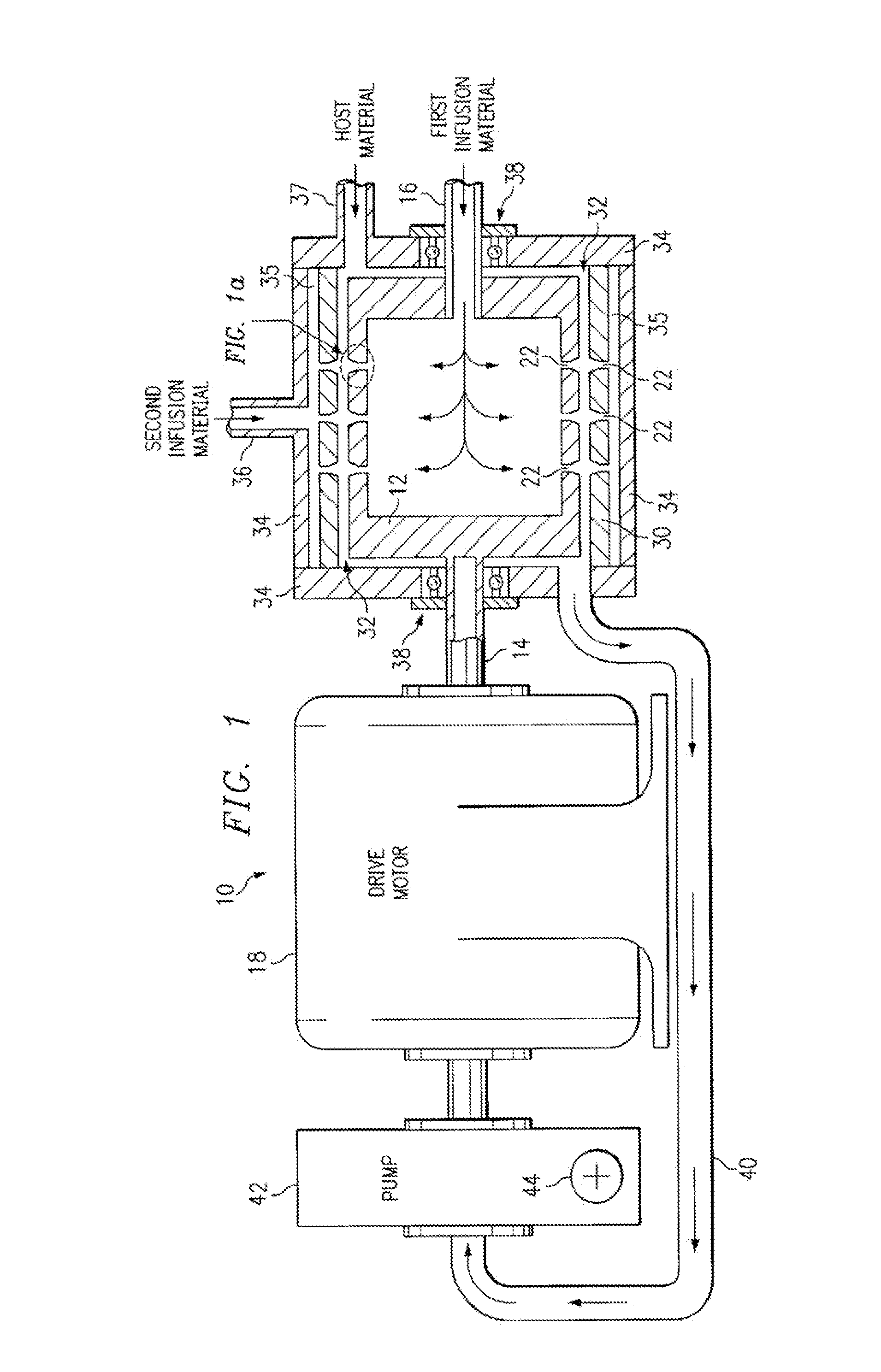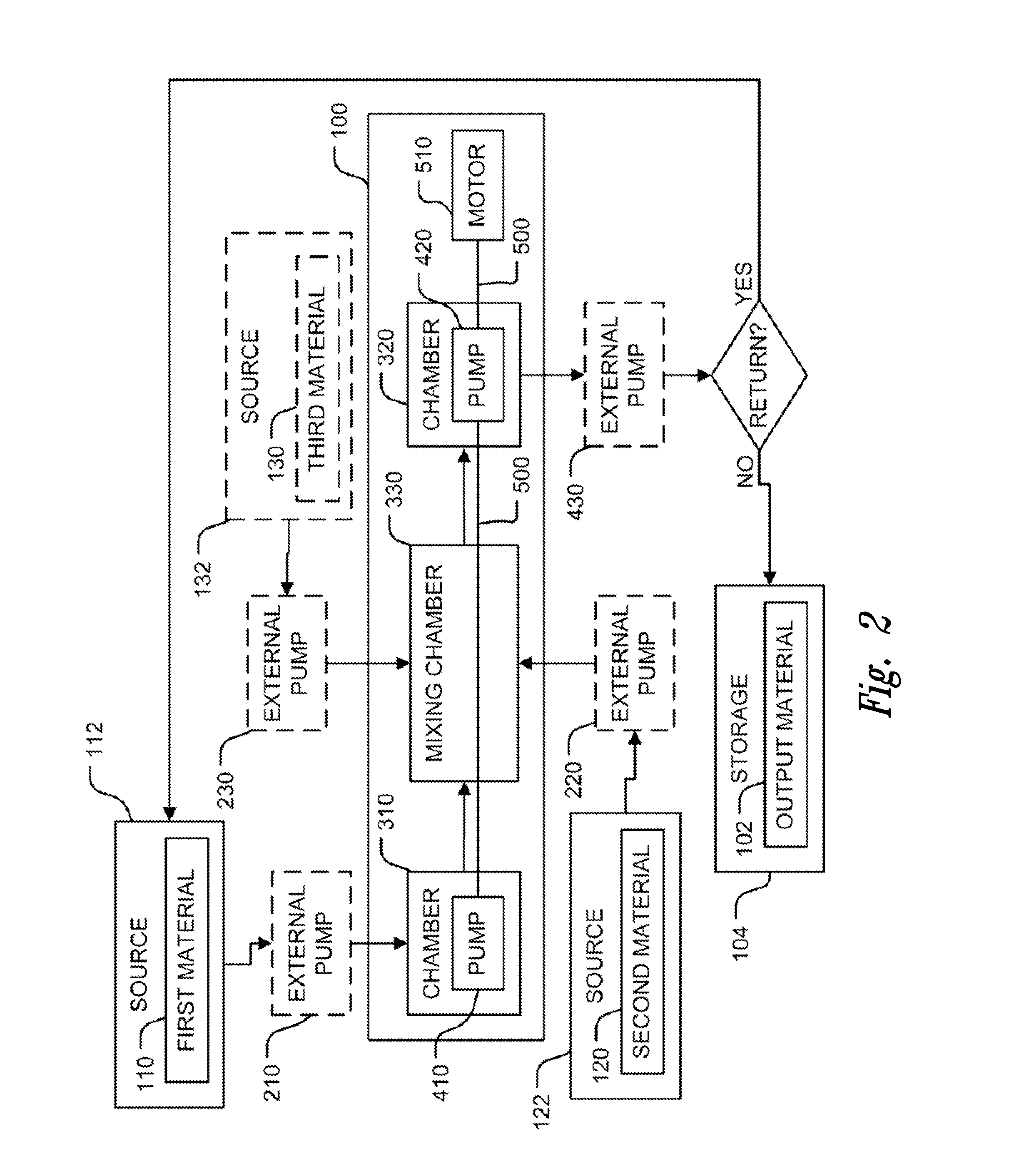Discovering the Benefits of Hypertonic Solutions in Sports Science
Hypertonic Solutions in Sports: Background and Objectives
Hypertonic solutions have emerged as a significant area of interest in sports science, offering potential benefits for athletes' performance and recovery. The evolution of this technology can be traced back to the early understanding of osmosis and its effects on cellular hydration. Over the years, researchers have explored various applications of hypertonic solutions in sports, ranging from pre-exercise hydration strategies to post-exercise recovery techniques.
The primary objective of investigating hypertonic solutions in sports science is to enhance athletic performance and optimize recovery processes. These solutions, characterized by their higher solute concentration compared to bodily fluids, have shown promise in improving fluid balance, reducing exercise-induced muscle damage, and potentially boosting endurance capacity.
Recent technological advancements have allowed for more precise formulation and delivery of hypertonic solutions, leading to increased interest from both the scientific community and sports industry. The development of specialized sports drinks and oral rehydration solutions has paved the way for practical applications of this technology in real-world athletic scenarios.
One of the key trends in this field is the personalization of hypertonic solutions based on individual athlete profiles and specific sport requirements. This tailored approach aims to maximize the benefits while minimizing potential side effects, addressing the diverse needs of athletes across different disciplines.
The exploration of hypertonic solutions intersects with several other areas of sports science, including nutrition, physiology, and biomechanics. This interdisciplinary nature has led to a more comprehensive understanding of how these solutions interact with the human body during intense physical activity.
As research in this area progresses, there is a growing focus on understanding the long-term effects of hypertonic solution use in athletes. This includes investigating potential adaptations in the body's fluid regulation mechanisms and the impact on overall health and performance over extended periods.
The ultimate goal of this technological pursuit is to provide athletes with safe, effective, and scientifically-backed methods to improve their performance and recovery. By harnessing the power of hypertonic solutions, sports scientists aim to push the boundaries of human physical capabilities while ensuring the well-being of athletes.
Market Analysis for Sports Nutrition Products
The sports nutrition market has experienced significant growth in recent years, driven by increasing health consciousness and the rising popularity of fitness activities. The global sports nutrition market was valued at approximately $44.43 billion in 2021 and is projected to reach $85.7 billion by 2030, growing at a CAGR of 7.5% during the forecast period. This robust growth is attributed to factors such as the expanding fitness industry, growing awareness of the importance of nutrition in athletic performance, and the increasing adoption of active lifestyles among consumers.
Within this market, hypertonic solutions are gaining traction as a specialized segment of sports nutrition products. These solutions, characterized by their higher solute concentration compared to bodily fluids, are designed to rapidly deliver nutrients and hydration to athletes during and after intense physical activity. The demand for hypertonic solutions is particularly strong among endurance athletes, team sports players, and fitness enthusiasts seeking improved performance and faster recovery.
Key market players in the sports nutrition industry, including Gatorade, Powerade, and emerging specialized brands, are increasingly focusing on developing and marketing hypertonic products. These companies are investing in research and development to create innovative formulations that optimize the benefits of hypertonic solutions for various sports and exercise scenarios.
The market for hypertonic solutions in sports nutrition is segmented based on product type, distribution channel, and end-user. Product types include ready-to-drink beverages, powders, and gels. Distribution channels encompass online retail, specialty stores, supermarkets, and fitness centers. End-users range from professional athletes to recreational sports participants and fitness enthusiasts.
Geographically, North America and Europe currently dominate the sports nutrition market, including the hypertonic solutions segment. However, the Asia-Pacific region is expected to witness the fastest growth in the coming years, driven by increasing disposable incomes, growing health awareness, and the rising popularity of Western-style fitness trends in countries like China and India.
Consumer trends influencing the hypertonic solutions market include a preference for natural and clean label products, personalized nutrition solutions, and convenient packaging formats. Additionally, there is a growing demand for products that not only enhance performance but also support overall health and wellness, leading to the development of hypertonic solutions enriched with functional ingredients such as vitamins, minerals, and antioxidants.
Current Challenges in Sports Hydration
Sports hydration has long been a critical aspect of athletic performance and recovery. However, despite decades of research and advancements in sports science, several challenges persist in optimizing hydration strategies for athletes. One of the primary issues is the variability in individual hydration needs, which makes it difficult to establish universal guidelines. Factors such as body composition, sweat rate, environmental conditions, and exercise intensity all contribute to this complexity.
Another significant challenge is the limited absorption capacity of the gastrointestinal tract during intense exercise. Traditional isotonic sports drinks, while effective in many situations, may not provide optimal hydration and nutrient delivery under extreme conditions or prolonged exertion. This limitation has led researchers to explore alternative solutions, including hypertonic formulations.
The timing and composition of fluid intake also present ongoing challenges. Balancing the need for rapid fluid absorption with the provision of essential electrolytes and carbohydrates remains a delicate task. Over-hydration and hyponatremia are risks that athletes and coaches must carefully navigate, especially in endurance events.
Furthermore, the impact of dehydration on cognitive function and decision-making abilities in team sports and high-skill activities is an area that requires more attention. While the physical effects of dehydration are well-documented, the mental aspects are less understood and potentially underestimated in current hydration strategies.
The development of practical and accurate hydration monitoring tools for real-time use during competition is another ongoing challenge. While laboratory methods provide precise measurements, they are often impractical in field settings. The need for non-invasive, reliable, and easy-to-use hydration assessment techniques remains a priority for sports scientists and practitioners.
Lastly, the personalization of hydration strategies faces obstacles in implementation. While research indicates that tailored approaches yield better results, the logistics of providing individualized hydration plans in team settings or large-scale events can be daunting. Balancing scientific best practices with practical constraints continues to challenge sports nutritionists and team management.
As the field of sports science evolves, addressing these challenges in sports hydration becomes increasingly important. The exploration of hypertonic solutions represents a promising avenue for overcoming some of these obstacles, potentially offering improved hydration efficiency and performance benefits for athletes across various disciplines.
Existing Hypertonic Solution Applications
01 Hypertonic solutions for medical treatments
Hypertonic solutions are used in various medical treatments, including wound healing, reducing edema, and managing intracranial pressure. These solutions have a higher solute concentration than body fluids, which can draw fluid out of tissues and cells through osmosis. This property makes them effective in treating conditions where fluid reduction is necessary.- Hypertonic solutions for medical treatments: Hypertonic solutions are used in various medical treatments, including wound healing, reducing edema, and managing intracranial pressure. These solutions have a higher solute concentration than body fluids, which can draw fluid out of tissues and cells through osmosis. This property makes them effective in treating conditions where fluid reduction is necessary.
- Hypertonic solutions in cell preservation and cryopreservation: Hypertonic solutions play a crucial role in cell preservation and cryopreservation techniques. These solutions help protect cells from damage during freezing and thawing processes by controlling ice crystal formation and cellular dehydration. They are particularly useful in preserving biological samples, organs, and tissues for research and medical purposes.
- Hypertonic solutions for nasal and respiratory treatments: Hypertonic saline solutions are used in nasal and respiratory treatments to alleviate symptoms of various conditions. These solutions can help reduce inflammation, improve mucociliary clearance, and provide relief from congestion. They are commonly used in treating sinusitis, allergic rhinitis, and other respiratory ailments.
- Hypertonic solutions in dialysis and fluid management: Hypertonic solutions are utilized in dialysis procedures and fluid management strategies. These solutions help remove excess fluid from the body, maintain proper electrolyte balance, and manage conditions such as hypervolemia. They are particularly important in peritoneal dialysis and in treating certain types of edema.
- Hypertonic solutions in food preservation and processing: Hypertonic solutions are employed in food preservation and processing techniques. By creating an environment with high solute concentration, these solutions can inhibit microbial growth and extend the shelf life of various food products. They are also used in dehydration processes and in enhancing the texture and flavor of certain foods.
02 Hypertonic solutions in cell preservation and cryopreservation
Hypertonic solutions play a crucial role in cell preservation and cryopreservation techniques. These solutions help protect cells from damage during freezing and thawing processes by controlling ice crystal formation and cellular dehydration. They are particularly useful in preserving biological samples, organs, and tissues for research and medical purposes.Expand Specific Solutions03 Hypertonic solutions for ophthalmic applications
Hypertonic solutions are used in various ophthalmic applications, including the treatment of corneal edema and dry eye syndrome. These solutions can help reduce swelling in the cornea and improve tear film osmolarity, providing relief for patients with eye-related conditions. The higher osmotic pressure of these solutions helps draw excess fluid from the corneal tissue.Expand Specific Solutions04 Hypertonic solutions in nasal and respiratory therapies
Hypertonic saline solutions are used in nasal and respiratory therapies to treat conditions such as sinusitis, cystic fibrosis, and bronchiolitis. These solutions can help thin mucus, reduce inflammation, and improve mucociliary clearance in the airways. The higher salt concentration in these solutions creates an osmotic gradient that draws water into the airways, hydrating and clearing secretions.Expand Specific Solutions05 Hypertonic solutions in biotechnology and cell culture
Hypertonic solutions are utilized in biotechnology and cell culture applications for various purposes, including cell lysis, protein extraction, and modulating cellular responses. These solutions can induce osmotic stress in cells, which can be used to study cellular mechanisms or to enhance the production of certain compounds. The controlled use of hypertonic conditions can also influence cell growth and differentiation in culture systems.Expand Specific Solutions
Key Players in Sports Nutrition Industry
The field of hypertonic solutions in sports science is in a growth phase, with increasing market size and technological advancements. The global sports nutrition market, which includes hypertonic solutions, is projected to expand significantly in the coming years. The technology's maturity varies across applications, with some areas more developed than others. Companies like Medtronic, Novartis AG, and Boehringer Ingelheim International GmbH are at the forefront of research and development in this field, leveraging their expertise in medical and pharmaceutical technologies. Universities such as The University of California and University of South Carolina are contributing to the scientific understanding of hypertonic solutions' benefits in sports performance. Emerging players like Revalesio Corp. and Sky Medical Technology Ltd. are introducing innovative products, further driving the competitive landscape in this promising sector.
Revalesio Corp.
Novartis AG
Scientific Innovations in Hypertonic Solutions
- A hypotonic to slightly isotonic sports drink containing a mixture of slowly and rapidly absorbable carbohydrates, including long-chain glucose polymers and fructose, along with essential minerals and vitamins, to maintain energy supply and fluid balance without osmotic imbalances.
- Administration of electrokinetically altered aqueous fluids containing charge-stabilized oxygen-containing nanostructures, which are superoxygenated and administered in amounts sufficient to reduce plasma inflammatory cytokines, prevent muscle and tendon damage, and enhance recovery by improving oxygen utilization and reducing perceived exertion.
Regulatory Framework for Sports Supplements
The regulatory framework for sports supplements, including hypertonic solutions, is a complex and evolving landscape. In the United States, the Food and Drug Administration (FDA) oversees the regulation of dietary supplements, which encompasses many sports nutrition products. The Dietary Supplement Health and Education Act (DSHEA) of 1994 serves as the primary legislation governing these products.
Under DSHEA, manufacturers are responsible for ensuring the safety of their products before they reach the market. However, unlike pharmaceuticals, dietary supplements do not require pre-market approval from the FDA. This regulatory approach allows for faster product development and market entry but places a significant burden on manufacturers to maintain product safety and quality.
The FDA does have the authority to take action against unsafe or mislabeled supplements after they are on the market. This includes the power to issue warnings, order recalls, and pursue legal action against manufacturers who violate regulations. The agency also requires that supplement labels include a complete list of ingredients and appropriate dosage information.
In the context of hypertonic solutions used in sports science, manufacturers must adhere to specific labeling requirements. These include clear identification of the product as a dietary supplement, accurate representation of the contents, and appropriate usage instructions. Claims made about the product's benefits must be substantiated by scientific evidence, although the threshold for this evidence is generally lower than that required for pharmaceutical products.
The Federal Trade Commission (FTC) also plays a role in regulating sports supplements by overseeing advertising practices. The FTC ensures that marketing claims are truthful and not misleading to consumers. This dual oversight by the FDA and FTC creates a comprehensive regulatory environment aimed at protecting consumer safety while allowing for innovation in the sports supplement industry.
Internationally, regulations vary significantly. The European Union, for instance, has stricter regulations on dietary supplements, requiring pre-market authorization for certain ingredients. This global variation in regulatory approaches creates challenges for manufacturers operating in multiple markets and necessitates careful consideration of compliance requirements across different jurisdictions.
As research into hypertonic solutions in sports science continues to advance, regulatory frameworks may evolve to address new findings and potential risks. Manufacturers and researchers must stay informed about these regulatory changes to ensure compliance and maintain consumer trust in their products.
Environmental Impact of Sports Nutrition Products
The environmental impact of sports nutrition products, particularly hypertonic solutions, is an increasingly important consideration in the field of sports science. As the demand for performance-enhancing supplements continues to grow, it is crucial to assess their ecological footprint and potential consequences on the environment.
One of the primary concerns regarding sports nutrition products is the packaging waste they generate. Many hypertonic solutions and other sports supplements come in single-use plastic bottles or sachets, contributing to the global plastic pollution crisis. These packaging materials often end up in landfills or oceans, posing significant threats to wildlife and ecosystems. The production of these packaging materials also requires substantial energy and resources, further exacerbating their environmental impact.
Another environmental consideration is the carbon footprint associated with the production and distribution of sports nutrition products. The manufacturing process of hypertonic solutions involves energy-intensive procedures, including ingredient sourcing, processing, and quality control. Additionally, the global distribution of these products contributes to greenhouse gas emissions through transportation and refrigeration requirements.
The disposal of unused or expired sports nutrition products is another environmental concern. Improper disposal of these products can lead to chemical contamination of soil and water sources. Some ingredients in hypertonic solutions and other sports supplements may have adverse effects on aquatic ecosystems if they enter waterways through improper disposal or wastewater systems.
Water consumption is a significant factor in the production of sports nutrition products. The manufacturing process of hypertonic solutions requires substantial amounts of water, which can strain local water resources, particularly in water-scarce regions. This issue becomes more pronounced as the demand for these products increases globally.
To address these environmental concerns, the sports nutrition industry is beginning to explore more sustainable practices. Some companies are investing in eco-friendly packaging alternatives, such as biodegradable materials or recyclable containers. Others are focusing on optimizing their production processes to reduce energy consumption and minimize waste.
Research into more environmentally friendly ingredients for hypertonic solutions is also underway. Scientists are exploring natural, sustainable sources for electrolytes and carbohydrates that can provide similar performance benefits while reducing the ecological impact of production and disposal.
As awareness of environmental issues grows, there is an increasing demand for transparency in the sports nutrition industry regarding the environmental impact of their products. This has led to the development of eco-labeling initiatives and sustainability certifications for sports nutrition products, allowing consumers to make more informed choices.



